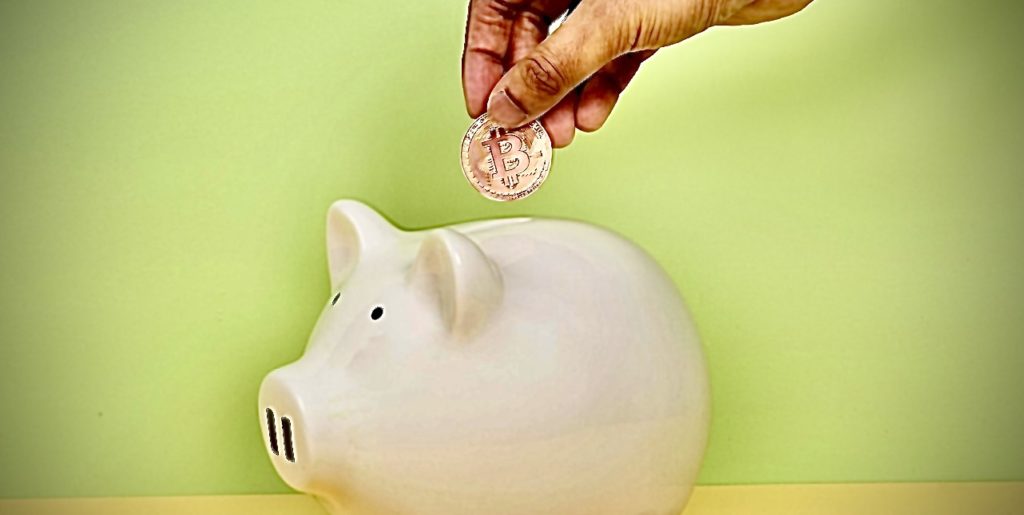
Someone asked me, “How much BTC do you think is enough for someone who works hard but doesn’t make a large amount of money?” Contrary to appearances, this is a difficult question to which I don’t have a simple answer, as it has too many variables, age, geographic location etc. So I will offer a modular answer to it.
If we try to step back as much as possible, we can come up with a few points for reflection.
1) Save rather than speculate
First of all, always keep in mind the usual warning: Never take the risk of investing/speculating with what you can’t afford to lose entirely (for example, taking out a mortgage on your house to invest everything in a single system, be it Bitcoin or something else, is obviously too dangerous).
Let’s also not forget that Bitcoin has only 13 years of history and no one can predict everything that could happen in the next 10 years (I’m not talking about scams by other “crypto” projects selling dreams, but critical flaws in the network itself, or even the Internet, changes in regulations in your country etc).
Also, even if the exchange rate doesn’t collapse to zero, BTC may just lose 50% of its price against the dollar for a year or more, as it has done in past fluctuations. Will you have the reserves to last through the winter…?
In short, whatever your budget, anticipate that all your BTC are worth zero, at least temporarily!
A healthy approach is to look at your BTC savings as a piggy bank in which you put a little bit regularly, an amount you can do without without without realizing it.
An example I sometimes give is the price of a pack of cigarettes. A smoker who consumes a pack a day spends about $250 per month, which literally goes up in smoke. One can imagine that putting aside (in BTC for example) $250 per month would not be a real problem for this person.
A quick calculation shows that for a BTC savings of $250 per month started 4 years ago, the total amount spent would be $12’250 and the current value of the bitcoins thus obtained would be about $47’750.
WARNING: The purpose of this example is NOT to say “the price always goes up and what happened historically is bound to happen again”! It is simply an EXAMPLE to illustrate that “throwing away” the equivalent of a pack of cigarettes a day CAN under certain conditions be a profitable bet.
Thus, we are no longer talking about a final total sum in the future, but rather a recurring sum related to the present. This is a change of perspective that makes all the difference.
It makes the original question obsolete, or on the contrary more useful, by changing the angle with which we look at the purchase of BTC.
Note: this example works just as well with non-smokers who play the lottery once a week.
2) World population and Bitcoin limit
The amount of BTC per person is another way (a bit fanciful, I grant you, but interesting nonetheless) of looking at the issue. If we remember that there will only be a maximum of 21 million BTC (that’s 2,100,000,000,000,000,000 satoshis, a satoshi being the smallest denomination of BTC) ever put into circulation and that there are 8 billion people on earth, that’s an average of 262,500 satoshis per person. If you hoard more than 100 francs of BTC today, you have already accumulated your share of the global planetary mass. It is still very early.
Let’s take the opposite view: there are today 56 million millionaires on earth, that is people who own the equivalent of $1’000’000. That represents 1% of the world population. If they decided to share all the BTC, that would be about 37’500’000 satoshis per person. That’s about CHF 15,000 per person at the current price. For CHF 15k you can have what the 1% of the planet can’t afford.
Another way of looking at it is that if all the millionaires in the world wanted to own 50,000,000 satoshis (half a BTC) there would never be enough to satisfy them all.
3) The Bitcoin standard
Another angle of calculation is the potential equivalence between gold and BTC. If we divide the total mass of gold on earth (about 175,000 tons, at $61,000 per kg) by the maximum number of BTC, we arrive at a theoretical price of $508,000 per BTC.
If we imagine a future where Bitcoin has become a means of storing and exchanging value on the same level as gold today, with reserves in central banks etc., or even a “BTC standard” similar to the pre-Bretton-Woods gold standard, we would have to own 2 BTC to be a “millionaire”.
4) Melting like an ice cube in the sun
The most painful way to calculate is simply to save to protect oneself from inflation.
Today, we hear about frightening rates exceeding 6 to 8%, and doing nothing, i.e. keeping your savings in cash, is equivalent to watching them melt ineluctably… For reference, €100 will have lost half of its value and will have a purchasing power of €50 in 10 years if inflation remains above 6% by then.
Unfortunately, no non-risky investment can effectively protect your savings. You need an investment that brings back more than the inflation, and at these rates it implies a non-negligible risk. Moreover, not everyone has access to this kind of return.
If we go back to the price of a pack of cigarettes per day, and we hope that the BTC price will appreciate a little on the long term, or at least not go down by 6% per year, we can hope to “protect” part of our savings against the fatality of this metaphorical ice cube melting… Always keeping in mind the other points discussed above, starting obviously with rule number 1.
5) Millions for two pizzas
A final angle of reflection is the episode of the famous “pizzas” of Laszlo. As a reminder, in 2010, when Bitcoin had almost no price and no media coverage, one of the very few participants in the network offered 10,000 BTC for anyone who would provide him with two pizzas (about $30). At today’s price, that’s a lot of money, but at the time it was the first transaction in which a physical good was purchased in BTC, and it started the Bitcoin economy as we know it today.
It is possible that the price of BTC will rise to the point where $30 invested today will also be worth millions in 12 years. It’s just as possible that it won’t. Nobody knows, of course.
But one thing is certain: people who hear this story today and say to themselves “if only I had known about Bitcoin back then and bought 10,000 BTC for $30…” don’t realize that $30 back then seemed as insignificant as it does today.
Today, $30 will buy you 75,000 satoshis. Whether we’ll ever see Bitcoin’s price rise into the millions, so that 75,000 can transform a life, is impossible to predict. But it’s small enough that it’s not dramatic if you lose it, and it’s easy to put aside in regular savings, if you feel like it.
Zero, or more
So when asked the question “how much BTC do you need to have at least?” you understand that there is no easy answer. For some like Warren Buffet, it is “zero”, for others like Elon Musk it is “more than zero”…
The only possible answer is the advice I give to my friends: the most important thing is to learn and understand. Only then can you answer your own question, depending on your finances and your confidence in the protocol and its ecosystem.
So I encourage them to invest a little bit, according to their means (a student doesn’t have as much cash to lose as a private banker), but enough so that it makes them want to learn how it works, read about how to own it properly, educate themselves on how to protect their savings carefully, educate themselves on why Bitcoin was invented, how money in general works, inflation, central banks etc.
Owning a few satoshis allows you to become familiar with the technology, culture, financial mechanisms of this unique system. And as you learn, you may want to expand your position. (Or not. But you’ll know why.)
And who knows, maybe if you hold on to them for a few years, those few satoshis will finally be worth a little more than two pizzas?
Questions? Comments? Find me on Twitter @ZLOK
